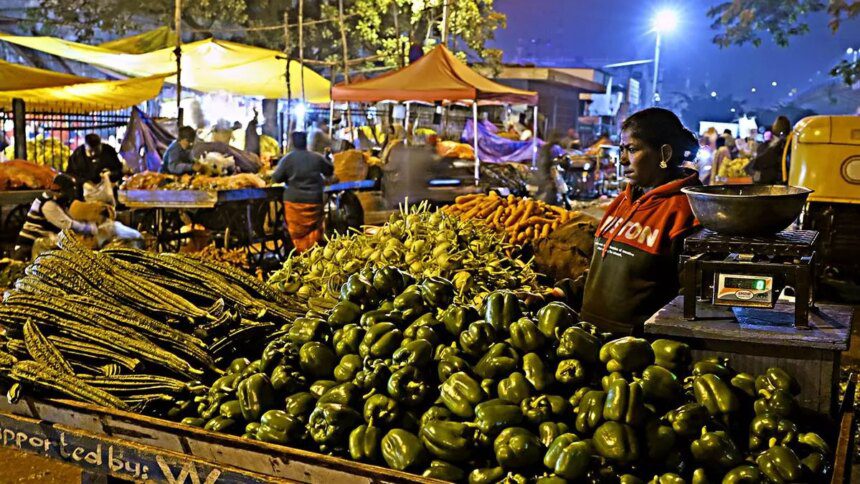Seasonal vegetable prices have seen a significant drop in recent times due to favorable climatic conditions. With bright sunlight during the day and cold weather at night, vegetable yields have improved, leading to lower prices in the market. A recent analysis of 14 seasonal vegetable prices in agricultural market yards across India showed a decrease in prices for vegetables such as radish, coriander, cauliflower, brinjal, pumpkin, tomato, bottle gourd, okra, carrot, and cabbage. On the other hand, prices for capsicum, onion, cucumber, and potato have seen an increase.
This drop in vegetable prices has had a positive impact on inflation rates. Primary food inflation has moderated, helping the wholesale price index-based inflation to drop to a three-month low. In the food basket, vegetable inflation has mellowed significantly, with rates of onion, tomato, radish, cucumber, and beans decreasing. Experts predict that this trend may continue, with retail inflation expected to move closer to the 5 percent mark in the coming months.
Anil K Sood, a Professor and Co-Founder of the Institute for Advanced Studies in Complex Choices, noted that vegetable price inflation has been on the rise in recent years, with the highest monthly average inflation recorded this year. This trend is unusual, especially during the winter months. However, there has been a moderation in tomato prices, which have seen the lowest increase in two months. Onion prices have continued to decline, but potato prices have increased sharply.
Overall, the drop in vegetable prices is a positive development for consumers, as it can help ease inflation rates and reduce the cost of essential vegetables. With favorable climatic conditions contributing to better yields, it is hoped that vegetable prices will remain stable in the coming months, providing relief to households across the country.









